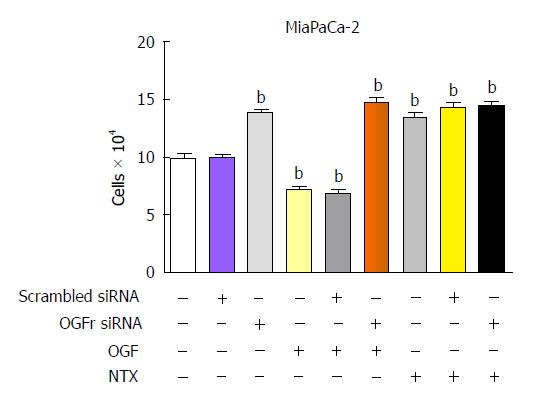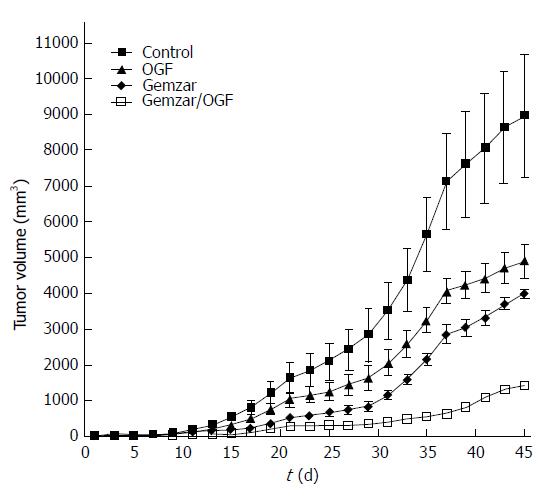Copyright
©2014 Baishideng Publishing Group Co.
World J Gastroenterol. Mar 7, 2014; 20(9): 2218-2223
Published online Mar 7, 2014. doi: 10.3748/wjg.v20.i9.2218
Published online Mar 7, 2014. doi: 10.3748/wjg.v20.i9.2218
Figure 1 Opioid growth factor receptor is required for the inhibitory action of opioid growth factor and the stimulatory action of NTX on growth of MIA PaCa-2 human pancreatic cell cultures.
Cells were transfected with opioid growth factor receptor (OGFr) siRNA or scrambled siRNA for 24 h and then treated with 10-6 mol/L. Opioid growth factor (OGF) or NTX, or 100 μL of sterile water for 72 h; compounds and media were replaced daily. Values are expressed as mean ± SE for cell counts from 2 aliquots/well and at least 2 wells/treatment. bP < 0.001 vs untransfected cultures.
Figure 2 Tumor growth of MIA PaCa-2 tumors xenografted into nude mice.
Animals were injected with 10 mg/kg opioid growth factor (OGF) daily, 120 mg/kg gemcitabine every 3 d (gemzar), both OGF and Gemzar, or 0.1 mL of sterile saline daily (control). Tumor volumes were monitored with calipers over a 45-d period of time. Values represent mean ± SE for all mice in the group. See original manuscript[39] for statistical comparisons.
- Citation: Zagon IS, McLaughlin PJ. Opioid growth factor and the treatment of human pancreatic cancer: A review. World J Gastroenterol 2014; 20(9): 2218-2223
- URL: https://www.wjgnet.com/1007-9327/full/v20/i9/2218.htm
- DOI: https://dx.doi.org/10.3748/wjg.v20.i9.2218










